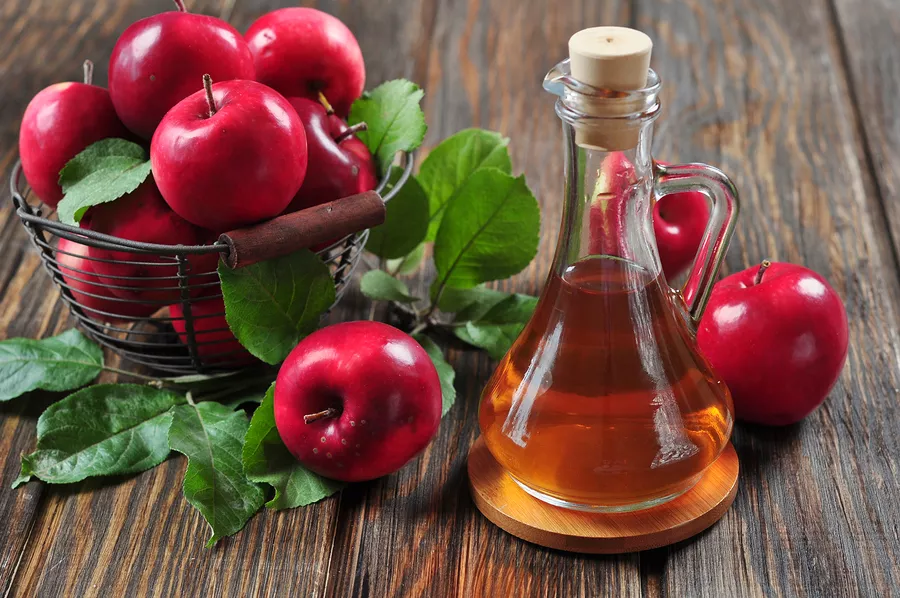Apple cider vinegar, often referred to as ACV, is a versatile and beloved pantry staple known for its numerous health benefits and culinary uses. While it’s readily available in stores, making your own apple cider vinegar at home can be a rewarding and cost-effective endeavor. In this comprehensive guide, we will explore the art of crafting apple cider vinegar from scratch. From selecting the right apples to understanding the fermentation process, you’ll discover how to make this tangy elixir that can be a valuable addition to your kitchen and wellness routine.
Selecting the Right Apples
The first step in making apple cider vinegar is selecting the right apples. The type of apples you choose significantly impacts the flavor and quality of your homemade vinegar. Here are some considerations:
Variety: While various apple varieties can be used, those with a high sugar content are ideal for making ACV. Common choices include Fuji, Honeycrisp, and Gala apples, but you can experiment with different varieties to achieve unique flavor profiles.
Freshness: Fresh, ripe apples are crucial for making high-quality vinegar. Avoid apples that are overly soft, bruised, or starting to rot.
Organic vs. Conventional: Organic apples are recommended, as they have fewer pesticides and chemicals. If using conventionally grown apples, be sure to wash and scrub them thoroughly before use.
Mixing Varieties: Mixing apple varieties can create a more complex flavor. Experiment with combinations to find the flavor that suits your taste.
Preparing the Apples
Once you have your apples, it’s time to prepare them for the fermentation process. Here’s how to do it:
Wash and Scrub: Rinse the apples under cold water and scrub them to remove any dirt, debris, or residues.
Core and Slice: Remove the cores and slice the apples into small, evenly-sized pieces. You can leave the peels on, as they contain natural yeasts that aid in fermentation.
Avoid Bruised Areas: Discard any parts of the apples that are bruised or spoiled, as they can negatively impact the quality of the vinegar.
Creating the Fermentation Base
To transform your apple slices into vinegar, you’ll need a fermentation base. This step involves turning the apple sugars into alcohol, which will later become vinegar. Here’s how to create the base:
Mash the Apples: Place the apple slices in a clean glass or ceramic container, such as a wide-mouthed jar or a crock. Mash them slightly to release juice.
Add Water: Cover the mashed apples with water, leaving about an inch of space at the top. Ensure the apples are fully submerged.
Sweetener (Optional): If you want to speed up the fermentation process, you can add a natural sweetener like sugar, honey, or maple syrup. This encourages yeast growth and fermentation.
Stir and Cover: Stir the mixture thoroughly and cover it with a clean cloth or paper towel secured with a rubber band. This allows for air circulation while keeping out debris and insects.
Fermentation Time: Place the container in a warm, dark place, ideally with a temperature of 60-80°F (15-27°C). Allow the mixture to ferment for about one to two weeks. During this time, the apples will start to produce alcohol.
Starting the Alcoholic Fermentation
After the initial fermentation, the apple mixture will have turned into hard cider, marking the beginning of the alcoholic fermentation process. Follow these steps to guide the process:
Strain the Liquid: Using a fine mesh strainer or cheesecloth, strain out the liquid from the apple pulp. The liquid you collect is your homemade apple cider.
Airlock (Optional): To prevent contamination during the alcoholic fermentation, you can use an airlock on your container. This device allows gases to escape while keeping out unwanted contaminants.
Fermentation Time: Return the liquid to the container, cover it again with a cloth or paper towel, and let it continue fermenting. This time, the liquid will turn into alcohol over the course of several weeks.
Testing for Alcohol: If you have a hydrometer, you can test the alcohol content. When the hydrometer reads close to 0, the alcoholic fermentation is complete.
Beginning the Acetous Fermentation
The next phase of making apple cider vinegar is the acetous fermentation, where the alcohol produced in the previous stage transforms into acetic acid, turning your hard cider into vinegar. Follow these steps to guide the process:
Return the Liquid: After the alcoholic fermentation is complete, return the liquid to the container and recover it with the cloth or paper towel.
Aerobic Fermentation: Unlike alcoholic fermentation, acetous fermentation is aerobic, meaning it requires oxygen. To facilitate this process, keep the container open, but continue to protect it from debris and insects.
Fermentation Time: The acetous fermentation process can take several weeks to several months, depending on environmental conditions. The vinegar will develop its characteristic tangy flavor during this time.
Monitoring the Progress: Taste the vinegar periodically to check its flavor. Once it reaches the desired level of acidity, you can stop the fermentation process.
Straining and Storing: Once your homemade apple cider vinegar has achieved the desired flavor and acidity, strain out any solids or mother of vinegar. Store the vinegar in a clean, glass bottle with a tight-fitting lid. It can be stored in a cool, dark place.
Customizing Your Homemade Apple Cider Vinegar
While the basic process of making apple cider vinegar remains consistent, you can customize your homemade vinegar to suit your preferences and needs. Here are some ways to do so:
Flavor Additions: Experiment with flavor additions like herbs, spices, or even fruit peels to create flavored apple cider vinegars.
Adjusting Sweetness: If you prefer a sweeter vinegar, you can add a natural sweetener like honey or maple syrup during the initial fermentation stages.
Fermentation Time: The longer you ferment your apple cider vinegar, the stronger and more acidic it will become. Experiment with different fermentation times to find your preferred acidity level.
Mother of Vinegar: If you want to kickstart the fermentation process with a mother of vinegar from a previous batch, you can acquire one from a friend or purchase it.
Health Benefits and Culinary Uses
Homemade apple cider vinegar is renowned for its potential health benefits and culinary uses. Here are some of the advantages and applications:
Digestive Health: Apple cider vinegar is known for its potential to aid digestion and promote a healthy gut.
Weight Management: Some people use apple cider vinegar as part of a weight management regimen due to its potential to help control appetite and regulate blood sugar.
Salad Dressings: ACV makes an excellent base for salad dressings, adding tangy flavor and health benefits to your greens.
Marinades: Use apple cider vinegar as a marinade ingredient for meat or vegetables to tenderize and infuse flavor.
Preservation: Apple cider vinegar can be used for pickling and preserving vegetables, adding flavor and aiding in preservation.
Conclusion
Crafting your own apple cider vinegar at home is a satisfying and cost-effective endeavor that offers numerous health benefits and culinary applications. By selecting the right apples, understanding the fermentation process, and customizing your vinegar, you can create a flavorful and healthful elixir that’s a valuable addition to your kitchen.

























